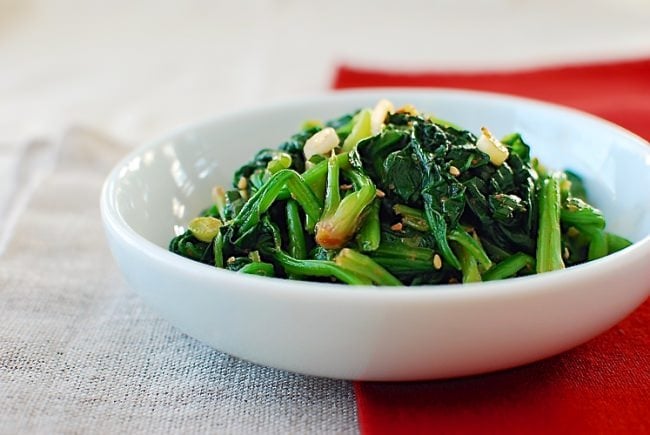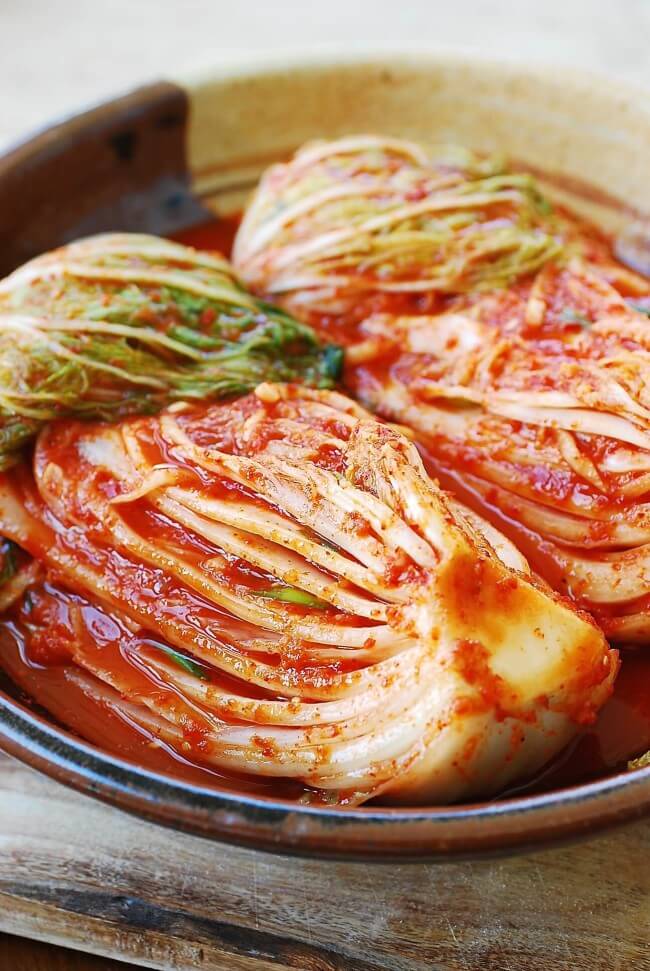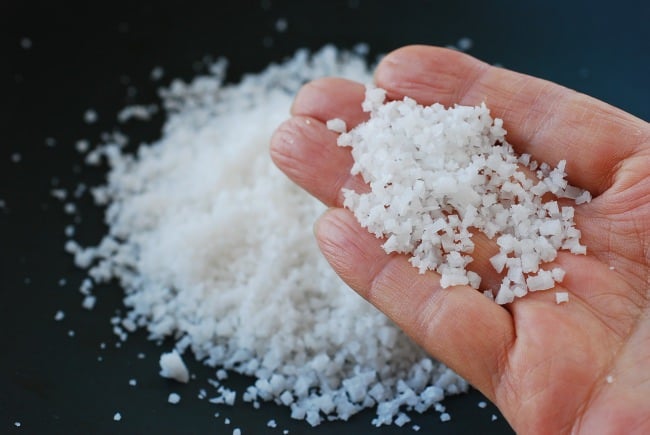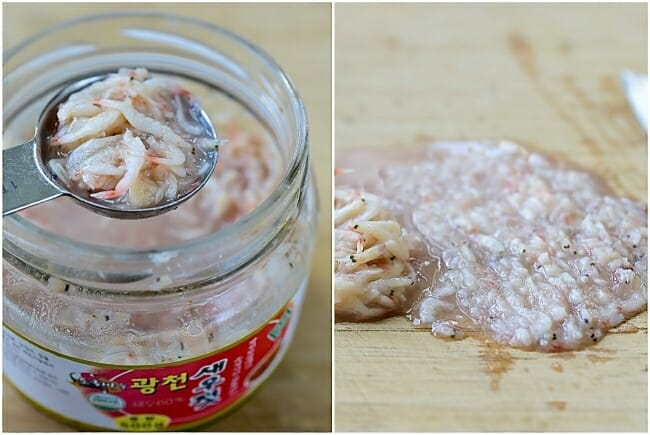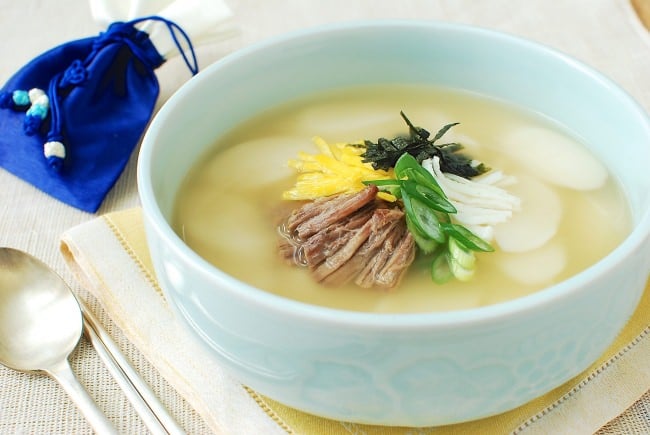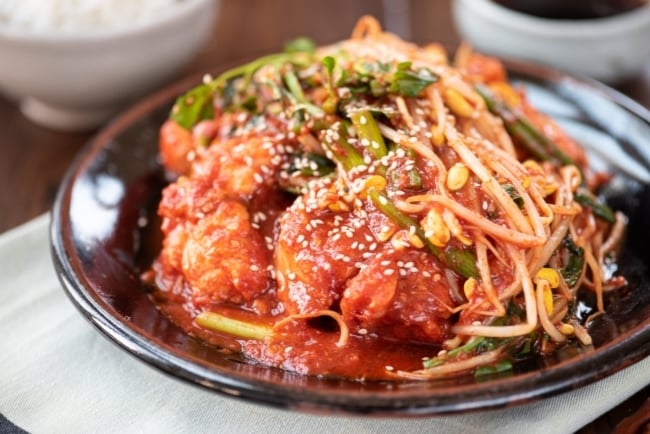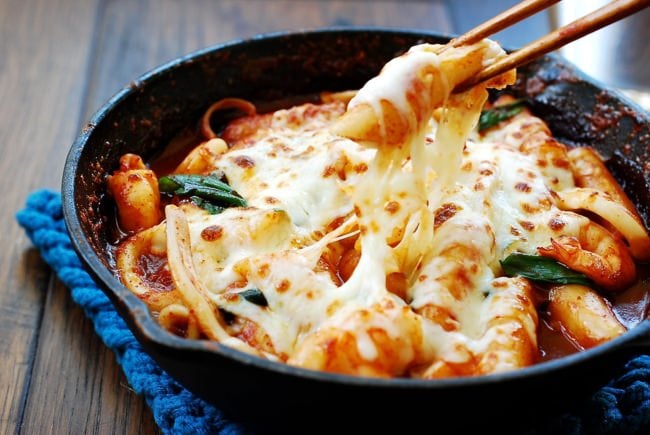Anchovy broth is essential in Korean cooking. Learn the basics of making anchovy broth to enhance flavors of your stews, soups, and other dishes.
Anchovy broth (myeolchi yuksu, 멸치육수) is essential in Korean cooking. It is a traditional base for many soups, stews and other dishes. If you’ve been following this blog, you probably know anchovy broth is used in many of my recipes. And I promise there will be many more.
Rather than reproducing an anchovy stock recipe each time, here’s everything you need to know about how to make anchovy broth for Korean cooking! Unlike meat-based stocks or broth, making anchovy broth takes very little work and time. The resulting broth is light in body, full of savory flavor, and not all that fishy. This is why it’s so versatile!
What do you need to make anchovy broth
You can simply use dried anchovies (myeolchi, 멸치) for a quick and simple broth. Dried kelp (dashima, 다시마), aka kombu, is the most popular addition. These two ingredients together make deliciously savory broth you can use it in any dishes that require a broth. For more complex broth, we add various other aromatic vegetables and other dried seafood such as dried shrimp. Here are a list of some of the most common ingredients:
- Dried anchovies (myeolchi, 멸치)
- Dried kelp (dashima, 다시마)
- Korean radish (mu, 무)
- Onion
- Garlic
- Dried shiitake mushrooms (pyogo beoseot, 표고버섯)
- Dried shrimp (mareun saewu, 마른새우)
Buying dried anchovies
Dried anchovies (myeolchi, 멸치) come in a wide range of qualities and sizes. The selection, however, is somewhat limited outside Korea. For best results, buy the good quality anchovies. Look for the ones that have clean silvery skins with a bluish tone. Typically, medium to large (about 2 -3 inches long) anchovies are used for stock as they impart more flavor. Dried anchovies keep well in the freezer for months. These anchovies are a staple in my freezer.
![Dried anchovies in a bag]()
Preparing anchovies
Remove the guts by opening the belly and scraping them out, but leave the heads on. The stock tends to get a little bitter with the guts, especially with large size anchovies. You don’t need to remove the guts from small to medium anchovies.
If you are sensitive to a fishy taste, you can precook the anchovies for a few minutes in a heated dry pan before using in stock. This process will get rid of some of the fishy taste.
![cleaning dry anchovies]()
Buying and preparing dashima (kombu)
Dashima (다시마) is edible kelp – large seaweed, which is widely used in a soup base in Korean and other Asian cooking. This is NOT the same seaweed that Koreans use for miyeok guk. Dried dashima comes in slightly thick flat sheets with white powder on the surface.
Do not wash this white powder off, or you will lose some of the natural flavor enhancers dashima is known for. Gently wipe dashima with a lightly dampened cloth only to remove any sand or grit. Stored in a cool dry place, it will last for months.
Quick Option – Packets
If you want more convenient way to make quick anchovy broth, you can buy a bag of anchovy packets from a Korean market. Keep the bag in the freezer, and simply drop a packet into a pot of water. These packets usually have some dried anchovies along with a small piece of dried kelp.
![Packets of dried anchovies and dried kelp for a soup base]()
How to make anchovy broth
Once you have all the ingredients ready, making the broth is pretty simple. The only things left to do is to add water, boil and strain the solids. Here are some tips that are helpful then making any variation of anchovy stock:
1. Soak dried anchovies and dashima in water for at least 20 minutes if you have time.
2. Boil, uncovered, so any fishy aroma that develops can escape.
3. Do not boil anchovies and dashima too long. If boiled too long, the stock will lose the delicacy of the flavors or even develop an unpleasant taste. Also, dashima will develop a slimy substance when over boiled, making the stock cloudy.
To illustrate the basic techniques and tips, I have chosen three classic variations here.
Anchovy Broth I – Very basic
It is very common for Korean home cooks to simply throw a few anchovies in the water to make this simplest form of anchovy stock. It’s a convenient way to add another layer of flavor to a dish. You can use this broth in any recipe that calls for anchovy broth. Try it for:
kongnamul guk,
baechu doenjang guk,
mu guk,
doenjang jjigae,
kimchi jjigae,
Anchovy Stock II – Enhanced
I probably make this one the most. It’s as easy as the first one, but dashima, a natural flavor enhancer, elevates the anchovy stock to the next level. This will add great flavors to any dish you use it for. In addition to the list above:
Tteokbokki
jjambbong
gyeranjjim
Anchovy Stock III – Fully flavored
In this version, aromatic vegetables add more depth and complexity to the flavor of the stock. You can of course use this fully flavored in any dishes that require a broth, including all of the ones list above. I also love this stock for any noodle soup such as
janchi guksu.
It’s also wonderful for
manduguk and
tteokguk.Often I add dried shiitake mushrooms and dried shrimp to this third version. They add strong flavors, and the resulting stock is fairly complex. These optional ingredients can be boiled with the vegetables.
Any leftover anchovy stock can be refrigerated for 3 – 4 days or frozen for later use.
If you tried this recipe, please rate the recipe and let me know how it turned out for you in the comment section below. Stay in touch by following me on YouTube, Pinterest, Twitter, Facebook, and Instagram.
Anchovy Broth for Korean Cooking
![]()
Anchovy broth is essential in Korean cooking. Learn the basics of making anchovy broth to enhance flavors of your stews and soups.
Anchovy Broth I – Very basic:
- 10 – 12 medium to large dried anchovies
Anchovy Broth II – Enhanced:
- 10 – 12 medium to large dried anchovies
- 2 pieces of dried dashima (about 3-inch squares)
Anchovy Broth III – Fully flavored:
- 10 – 12 medium to large dried anchovies
- 2 pieces of dried dashima (about 3-inch squares)
- 4 ounces Korean radish (cut into big chunks)
- 1/2 small onion whole
- 2 – 3 garlic cloves
- white parts of 2 scallions
Optional ingredients:
- Dried shiitake mushrooms
- Dried shrimp
Anchovy Broth I – Very basic:
-
Prepare the dried anchovies, and soak in 6 – 8 cups of water for at least 20 minutes, if you have time. Then, bring it to a moderate boil, uncovered. Reduce the heat to medium high and boil for 10 minutes. Drain the liquid to remove the anchovies.
![]()
Anchovy Broth II – Enhanced:
-
Prepare the dried anchovies and dashima (about 3-inch squares). Soak them in 6 – 8 cups of water in a medium size pot (3 Qt) for at least 20 minutes, if you have time. Then, bring it to a gentle boil, uncovered. Reduce the heat to medium high, and boil for 10 minutes. Strain the liquid to remove anchovies and dashima from the stock.
![]()
Anchovy Broth III – Fully flavored:
-
Prepare the dried anchovies and dashima. Also prepare the aromatic vegetables
![]()
-
Meanwhile, in a pot large enough to hold 12 – 14 cups of water (5 Qt pot), place the anchovies and vegetables with 8 cups of water. Bring it to a boil. Reduce the heat to medium high and boil for 10 minutes. Remove the dashima, and continue boil for another 10 to 15 minutes. Strain the broth, and discard the solids.
![]()
-
Simply add the optional ingredients with the anchovies and vegetables and follow the instructions for Anchovy Broth III.
![]()
Any leftover anchovy stock can be refrigerated for 3 – 4 days or frozen for later use.
This anchovy broth recipe was originally posted in June 2011. I’ve updated here with new photos and a recipe card.
The post Anchovy Broth for Korean Cooking appeared first on Korean Bapsang.




![]()
![]()
![]()
![]()









































